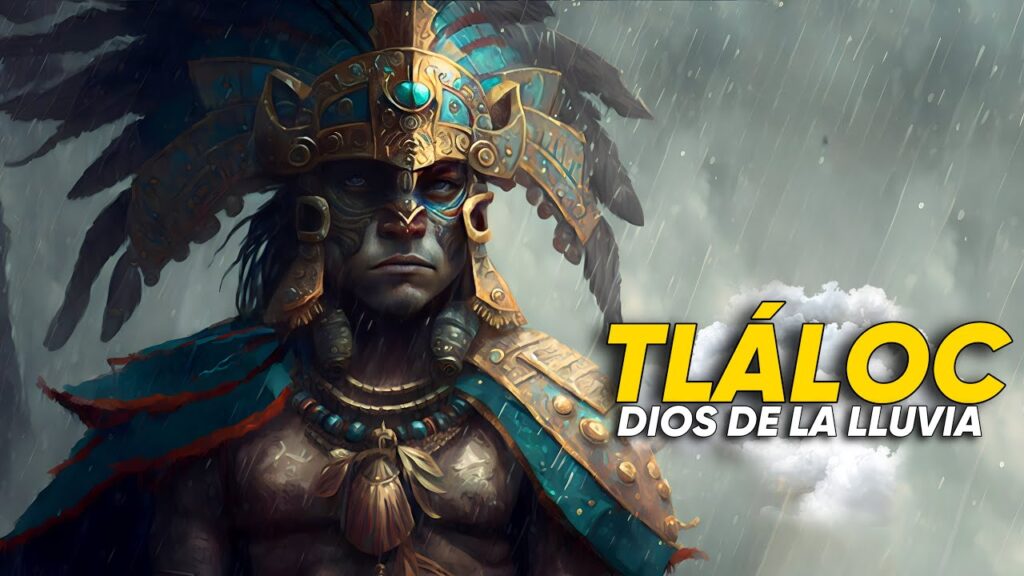Discovering the Tlaloques: Divine Assistants of Tláloc
In the vast and rich tapestry of Mexican mythology, few beings are as intriguing as the Tlaloques. These lesser deities or divine assistants are closely associated with Tláloc, the formidable god of rain, water, and fertility. The Tlaloques served a vital function in the pantheon of the ancient cultures of Mexico, particularly the Aztecs, by helping Tláloc in his duties. They are often depicted as dwelling in mountainous realms, embodying the very essence of the precipitating clouds that cloak the high peaks of Mexico’s diverse landscapes.
The Tlaloques were believed to gather clouds and pour out the rains that the agricultural societies of Mesoamerica depended on. Their importance cannot be overstated; they were the custodians of the life-giving waters, pooling their energies to manifest the wet season’s life-affirming storms. Myths describe their abode as a series of caverns filled with treasures and large jars containing the rain. In ceremonies dedicated to Tláloc, the Tlaloques were also honored in the hopes of securing favorable weather and a bountiful harvest, illustrating their deep-rooted significance in the cycle of growth and sustenance.
What is truly fascinating is how the Tlaloques also encompassed a duality within their roles. Not only did they bring forth the nurturing rain, but they also wielded the power to unleash floods, hail, and thunderstorms, symbolizing the volatile nature of the elements they governed. This duality is a common theme in pre-Hispanic cultures, underscoring the respect for nature’s power and its unpredictable temperament. As we journey through the less trodden paths of Mexico, we find ourselves drawn into a world where the Tlaloques still resonate, their stories etched within the murmuring brooks and the rolling mists that enshroud Mexico’s magnificent highlands.
The Myth of the Tlaloques: Breaking Jars to Summon Rain
In the heart of Mexico’s rich tapestry of mythology, the Tlaloques hold a special place. These lesser deities, servants to the rain god Tlaloc in the pantheon of pre-Hispanic cultures, were thought to reside atop mountains and high places, where the clouds meet the earth’s embrace. It was believed that the Tlaloques were responsible for the collection and dispensation of rainwater, a critical life force for the agriculture-dependent civilizations of ancient Mexico. The myth speaks of jars or pots, brimming with the waters of life, that the Tlaloques would carefully oversee.
The story unfolds with the Tlaloques in a temperamental dance of wills and whims, deciding the fates of the people below. Legend tells of these gods observing the needs of the earth, and when the moment was ripe, they would ceremoniously shatter their clay vessels to release the vital rains. The act of breaking the jars was a significant ritual, symbolizing the unleashing of life-giving water onto the crops, fields, and forests. This imagery grew so vivid in the collective consciousness of the indigenous people that it became a ceremonial act replicated by priests and shamans to ensure a bountiful harvest.
This enthralling narrative expresses more than just a meteorological phenomenon; it encapsulates the connection and reverence the ancient Mexicans held for the forces of nature. The Tlaloques, through their capacity to summon rain, were intertwined with the agricultural cycles, the very sustenance of the cultures that thrived in this region. Invoking the image of breaking jars in the heavens not only exemplified a mystical event but also underscored the intimate bond between humans and the divine, between the land they cultivated and the skies that nurtured it.
Exploring the Role of the Tlaloques in Mesoamerican Culture
The Tlaloques were deific entities within the Mesoamerican pantheon closely associated with rain and water, playing a crucial role in the environment and agricultural practices of ancient civilizations such as the Aztecs. Often depicted as dwarf-like helpers of the rain god Tlaloc, the Tlaloques were believed to reside in mountainous regions, the reputed source of waterways and life-giving rains. Their influence extended beyond mere environmental control, becoming integral to the cultural and religious practices that emphasized the importance of water and its cycle as a fundamental life force.
In Mesoamerican art, Tlaloques are frequently represented carrying jars of water, signifying their role as custodians of precipitation. They were instrumental in the ceremonies dedicated to Tlaloc, where the primary aim was to appease these deities for bountiful rainfalls and thus ensure prosperous harvests. The ritualized aspect of their veneration included offerings and sacrifices, highlighting their esteemed place in society. Such rituals underscore the respect and awe these cultures held for the forces of nature, personified by the Tlaloques, and reflect the broader environmental consciousness that characterized their worldview.
Understanding the role of Tlaloques provides valuable insights into the complexity of Mesoamerican belief systems and their close ties to the natural world. These mythological figures symbolized the intricate link between the divine and terrestrial, illustrating the ancient civilizations’ recognition of their dependence on natural phenomena. Modern-day interpretations of the Tlaloques continue to inform our perceptions of the pre-Columbian Americas, emphasizing the sophistication and depth of indigenous cosmologies.
How the Tlaloques Influence Rainfall According to Aztec Mythology
The Aztec civilization, which once thrived in the region of present-day Mexico, was rich in mythology and religion, with a pantheon of gods responsible for every aspect of the natural world. Among these divine figures were the Tlaloques, lesser deities associated with rain and fertility. According to Aztec mythology, the Tlaloques were thought to control the rainfall, which was vital for their agriculture-based society.
The Tlaloques resided in the mountaintops, where clouds are born, and they were considered the servants of the rain god Tlaloc. It was believed that these deities had large jugs filled with water that they would pour out to send rain to the earth. The type of water they poured determined not just the quantity of rain, but also its quality. This sacred act was crucial for crops and the overall well-being of the Aztec communities.
Each Tlaloque was thought to be responsible for specific types of rain that correlated with their respective jugs. Some were believed to hold fresh water for nurturing crops, while others contained salt water for purification, and even water that would cause frost or diseases. Their choices in unleashing certain types of rainfall reveal the Aztecs’ understanding of the unpredictability and dual nature of weather—both life-giving and potentially destructive.
Mythology explains that the Tlaloques observed rituals and ceremonies conducted by the Aztecs, and these human efforts could please or anger them. In times of drought or excessive rain, rituals and offerings were made to appease these deities. The Aztecs held that maintaining a good relationship with the Tlaloques was essential for favorable weather and, by extension, a prosperous harvest season.
The Tlaloques also featured in the mythological narrative of the Aztec calendar, with festivals and sacrifices scheduled to honor them at specific times of the year. Such times were carefully chosen to align with agricultural cycles. Their worship was not only a tribute to their power over the rain but also an acknowledgment of their role in the cycle of water that sustains all life. The intricate nature of the Tlaloques’ mythology reflects the deep connection the Aztecs felt with the environment and the forces that governed it.



